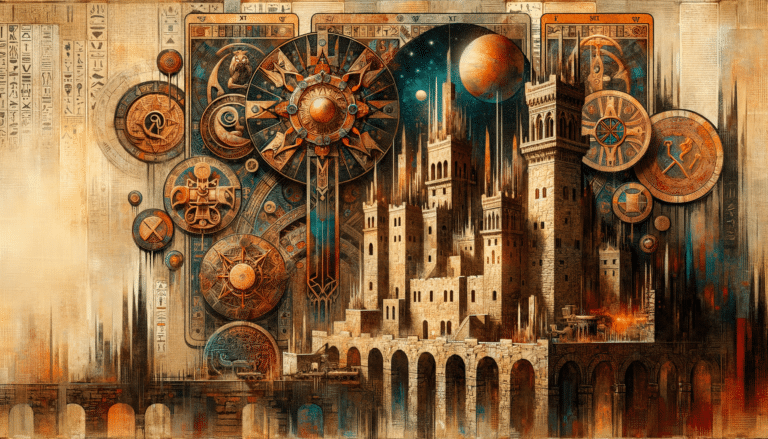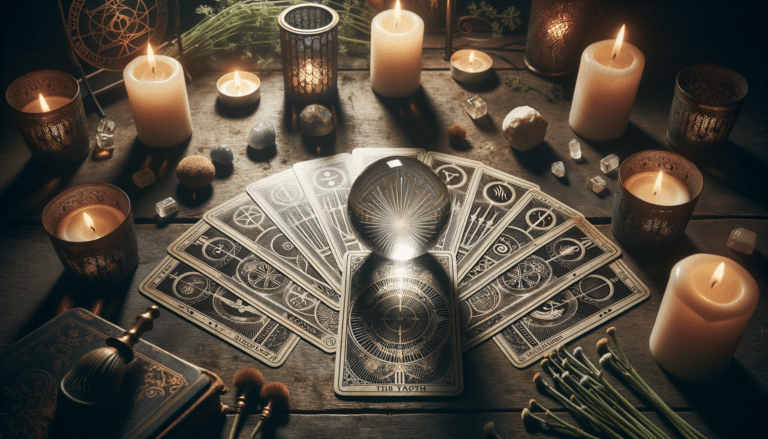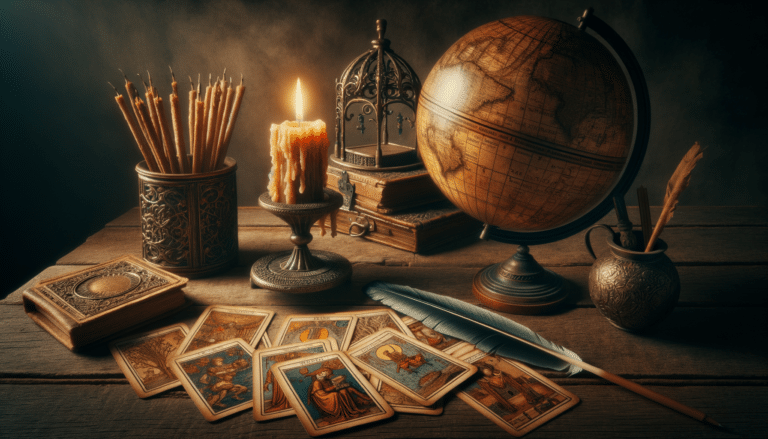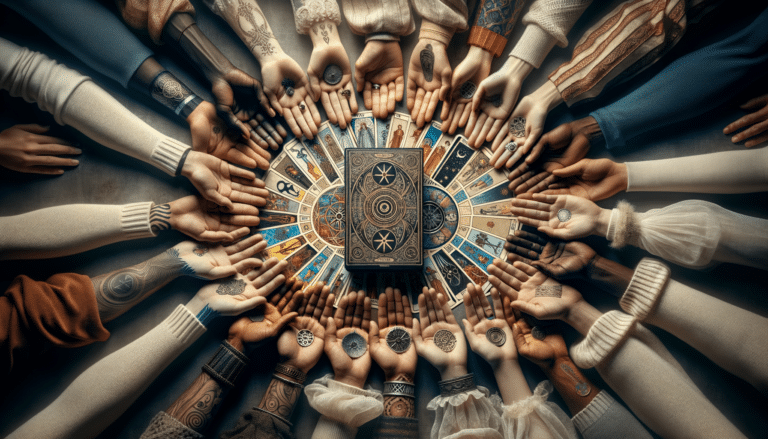Decoding Historical Symbolism In The Tarot Deck
You shuffle the deck, lay the cards, and ponder their intricate images; you’re not just glimpsing your fate, you’re diving into a deep pool of historical symbolism.
The Tarot deck is a tapestry woven with the threads of ancient archetypes, cultural narratives, and elemental correspondences. As you explore the origins of Tarot imagery, you’ll uncover the meanings behind the cryptic Major Arcana and the subtleties of the four suits linked to earth, air, fire, and water.
You’ll decode the hierarchies within the court cards and the numerology that pulses through the deck. By understanding the iconography in the Minor Arcana, you’ll see how cultural influences have shaped symbols that continue to guide and mystify.
Let’s embark on a journey to decode the historical symbolism in the tarot deck. Symbolism that’s imbued in every card of the Tarot deck, enriching your readings with layers of ancient wisdom.
Key Takeaways
- The Tarot deck originated in 15th-century Italian courts and initially used for games, but gained deeper meanings over time.
- The Major Arcana cards represent unique archetypes and serve as stepping stones to wisdom, with the Fool symbolizing a courageous step into the unknown.
- The High Priestess holds hidden knowledge and intuition, while the Death card symbolizes transformative passages and offers a fresh perspective on change and renewal.
- Each suit in the Tarot is linked to a natural element, with Wands representing Fire, Cups symbolizing Water, Swords embodying Air, and Pentacles symbolizing Earth.
Origins of Tarot Imagery
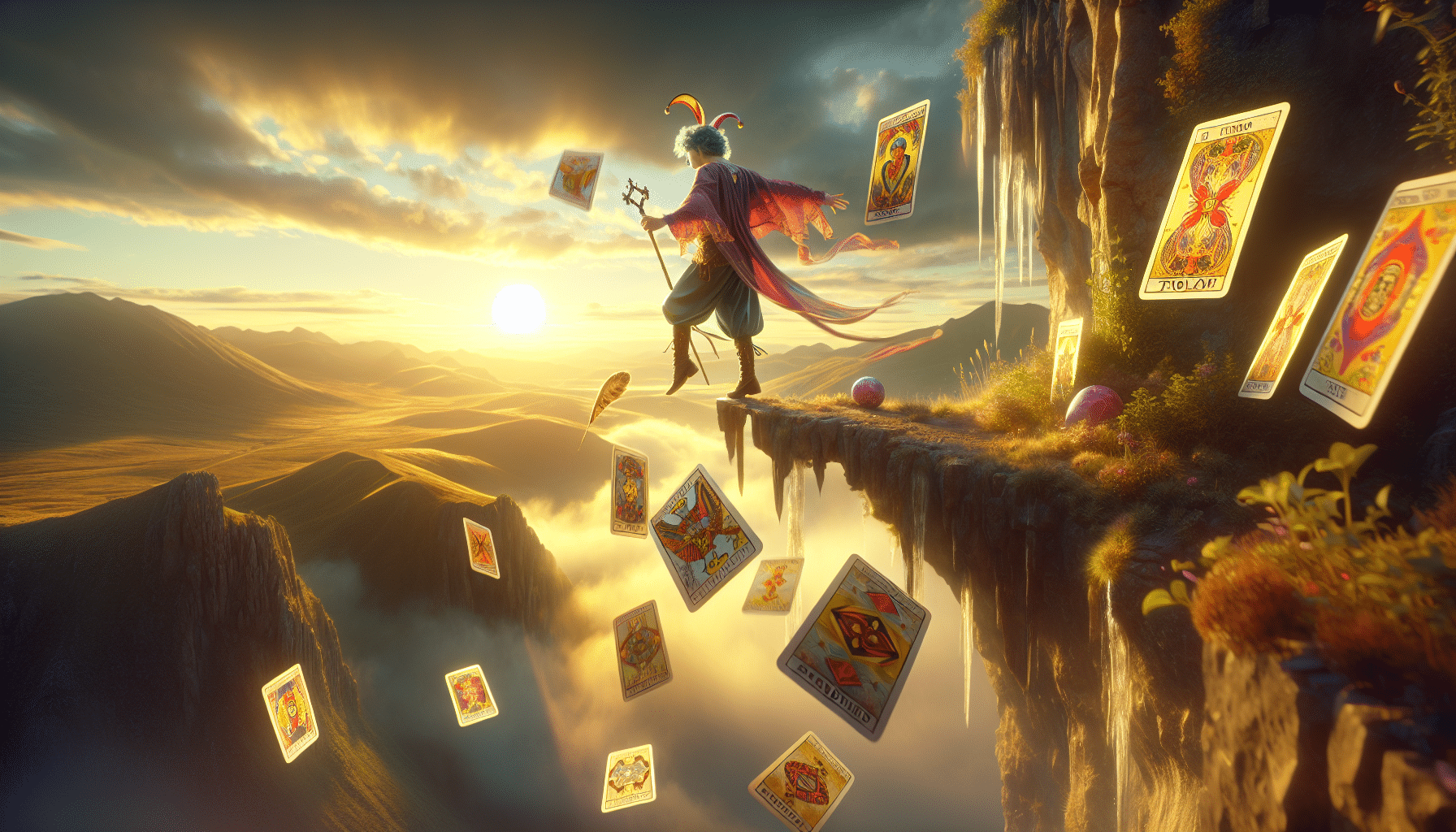
The Tarot deck’s imagery has its roots in the cultural and mystical practices of the 15th-century Italian courts, where you’d find the earliest known tarot cards. These decks were initially used for games, but over time, they took on more profound meanings through medieval influences and Renaissance esotericism. The cards were embedded with symbols and archetypes that reflected the period’s religious and philosophical ethos.
As you explore the Tarot, you’ll notice the medieval world’s impact on the Major and Minor Arcana. The hierarchical structure of society is mirrored in the cards, with kings, queens, knights, and peasants. This stratification carried significant weight during the Middle Ages, and it’s evident in the Tarot’s order and ranks.
Renaissance esotericism also played a pivotal role in shaping the Tarot. During the Renaissance, there was a revival of interest in the mystical and the occult. Scholars and mystics delved into ancient texts, seeking hidden knowledge and divine connections. The Tarot absorbed these ideas, with cards like The Magician and The High Priestess reflecting concepts of hidden knowledge and the duality of the material and spiritual realms.
Major Arcana Archetypes
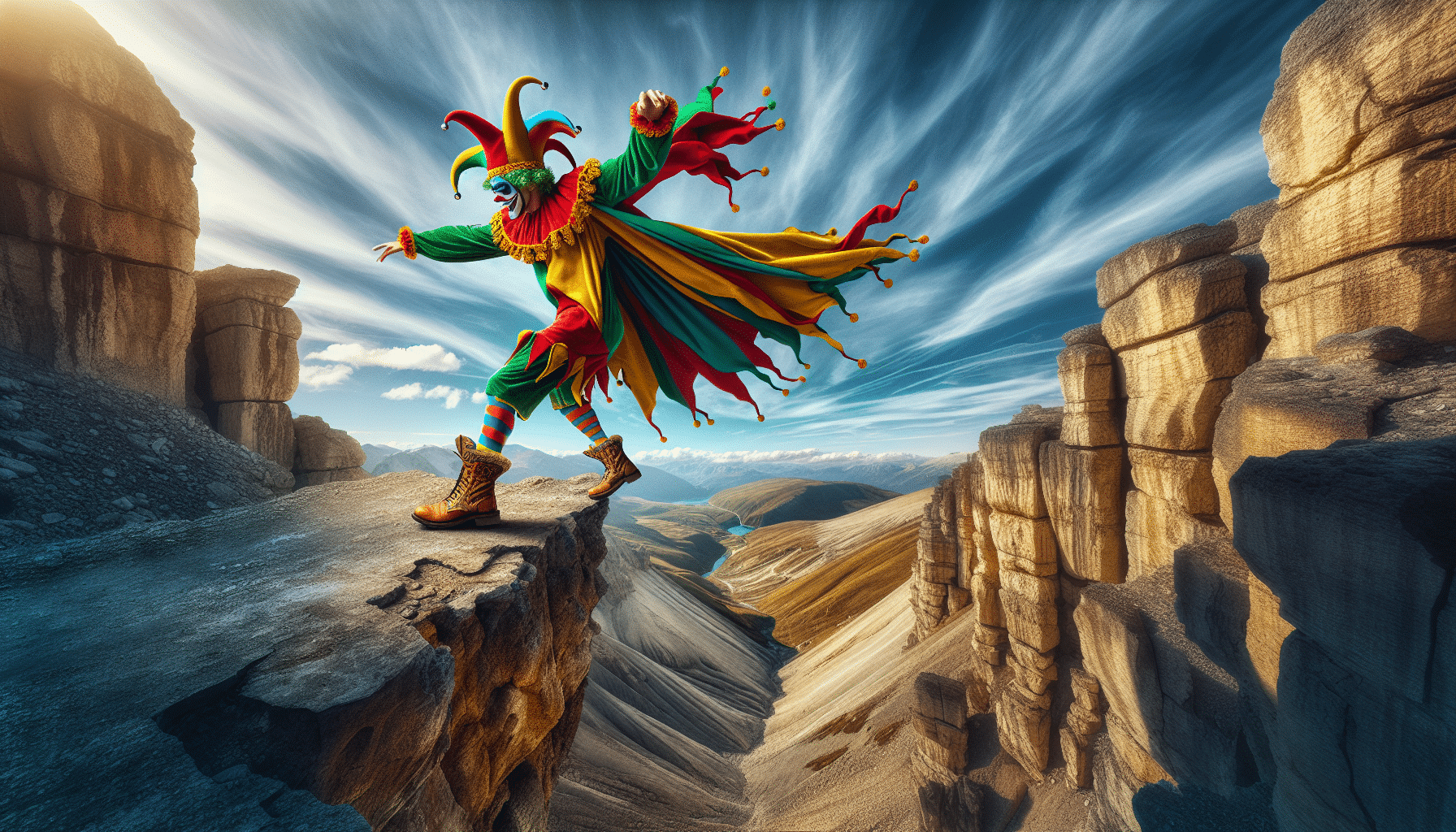
You’re about to uncover the layers of meaning within the Major Arcana, where each card serves as a unique archetype.
Consider the Fool’s card as the starting point of a symbolic journey, representing a leap into the unknown with pure potential.
The High Priestess guards esoteric knowledge, while the Death card isn’t about literal endings but rather profound transformation.
Fool’s Journey Beginnings
Within the Major Arcana of the Tarot deck, your journey begins with the Fool, an archetype embodying innocence and the spirit of adventure. This figure represents the start of your mystical initiation, a leap into the unknown that mirrors the archetypal steps of many heroic tales.
As you progress, you’ll encounter numerous characters and lessons that shape your understanding of life’s complexities.
Here are three key insights to enhance your appreciation:
-
The Fool signifies a courageous step – stepping out into the world without fear.
-
Each Major Arcana card reflects a life lesson – they’re stepping stones on your path to wisdom.
-
Archetypal steps mark growth and transformation – understanding these can lead to profound personal insights.
High Priestess’ Hidden Knowledge
As you delve deeper into the Major Arcana, the High Priestess invites you to uncover layers of hidden knowledge and intuition. The card embodies the gatekeeper of the unconscious, holding mystical manuscripts that symbolize the esoteric and secretive wisdom accessible to those who seek beyond the surface.
Her priestess attire is not just for show; it’s a visual cue to her connection with the divine and the realms of deeper understanding. Let’s break down some key aspects:
| Symbol | Significance |
|---|---|
| Pomegranates | Fertility, abundance, and the divine |
| Blue Robes | Intuition, wisdom, and spiritual understanding |
| Crescent Moon | Intuition, change, and the feminine divine |
| Cross on Chest | Balance between the material and spiritual |
These symbols, woven into her very being, beckon you to listen to your inner voice and embrace the knowledge that lies within silence and stillness.
Death Card Transformation
Often misunderstood, the Death card in the Tarot deck symbolizes not a literal end but a transformative passage, signaling profound change and renewal in your journey. It’s a rebirth metaphor that offers a fresh perspective:
-
Transition: The card represents the inevitable transitions life presents. It’s not about the finality of death, but the endings representation that make way for new beginnings.
-
Transformation: Embrace the concept of shedding old layers. Like leaves falling in autumn to nourish the soil for spring growth, you too must let go of the past to flourish anew.
-
Rebirth: Grasp the opportunity for rebirth. When the Death card appears, it invites you to evolve, urging you to step into a revitalized version of yourself, unburdened by what no longer serves you.
Check out our Tarot Cards here…
Suits and Their Elements

You’ve explored the Major Arcana and now it’s time to turn your attention to the suits of the tarot deck.
Each suit is linked to a natural element that enhances its meaning and symbolism.
Let’s examine how these elemental associations shape the narratives of your readings.
Elemental Associations
One must understand that each suit in the Tarot deck is intricately linked to a classical element, shaping its meaning and interpretation. These elements correspond to specific astrological correlations and color symbolism, providing a rich tapestry of insight for both the novice and adept reader.
Here’s what you should know:
-
Wands represent Fire, associated with action, inspiration, and often linked with assertive astrological signs like Aries, Leo, and Sagittarius. Their color symbolism is typically red or orange, evoking passion and energy.
-
Cups symbolize Water, reflecting emotions, intuition, and connections with signs like Cancer, Scorpio, and Pisces. Blues and greens are their colors, suggesting depth and fluidity.
-
Swords are tied to Air, embodying thought, conflict, and intellectual pursuits, reminiscent of Gemini, Libra, and Aquarius. Their hues are often yellow, suggesting clarity and intellect.
Suit and Their Historical Symbolism in the Tarot Deck
Delving into the four suits of the Tarot deck, you’ll uncover a unique blend of historical symbolism and elemental energies that shape their narratives. Each suit carries its own color symbolism and geometric patterns, which together form a complex language of divination.
Here’s a concise table to help you grasp their meanings:
| Suit | Element |
|---|---|
| Cups | Water |
| Pentacles | Earth |
| Swords | Air |
| Wands | Fire |
Cups, with their fluid shapes, reflect water’s emotional and intuitive qualities. Pentacles, grounded in geometric solidity, symbolize material aspects and Earth’s stability. Swords, with their sharp angles, capture Air’s intellectual and conflict-driven nature. Wands, radiating lines of force, embody Fire’s dynamic energy and creativity. You’re now better equipped to interpret the Tarot’s profound symbology.
Learn more with these tarot books here…
Court Cards Hierarchies
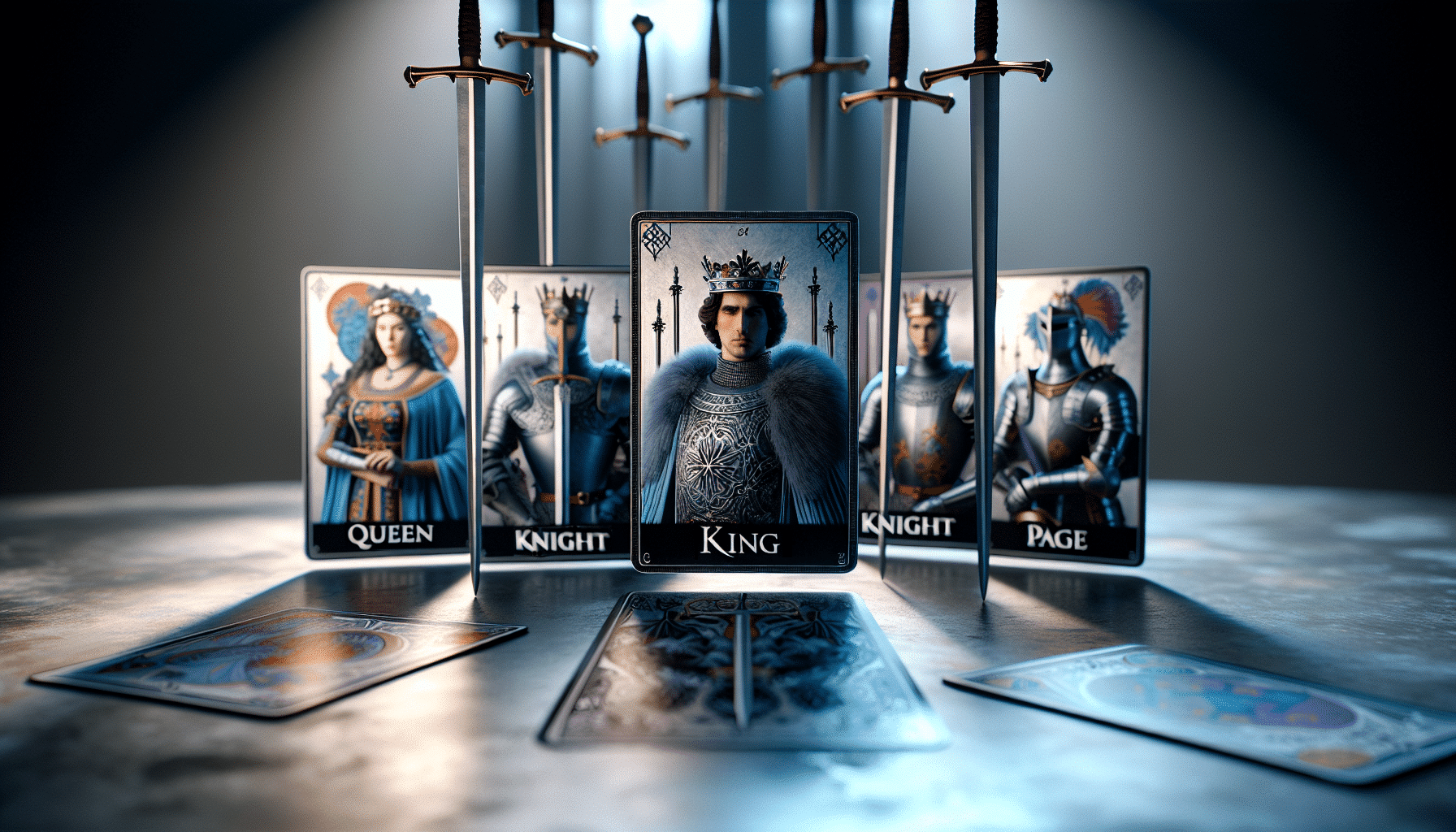
Tarot court cards, comprising Kings, Queens, Knights, and Pages, embody distinct hierarchies and roles that reflect historical societal structures. The royal representation within these cards mirrors social stratification, offering insights into the power dynamics and roles of each class during the time periods the tarot deck draws from.
Here’s a breakdown of the court card hierarchy to help you grasp their significance:
-
Kings: At the top of the hierarchy, Kings symbolize authority, control, and the embodiment of masculine energy. They represent the highest level of achievement in their respective suits.
-
Queens: Queens denote intuition, nurturing, and the feminine counterpart to the Kings. They reflect the social importance of women in leadership and advisory roles.
-
Knights: Often seen as action-takers or agents of change, Knights symbolize action, adventure, and the pursuit of goals. They’re the dynamic force that propels the suit’s energy forward.
- Pages: Pages, as the youngest members of the court cards, represent messages, new beginnings, and the potential for growth. They symbolize curiosity, learning opportunities, and the initial spark of inspiration that precedes action.
Understanding these roles not only enhances your interpretation of the cards but also provides a lens through which you can view historical power structures. You’ll find that delving into the court cards’ hierarchies enriches your tarot readings with a deeper appreciation of their symbolic legacy.
Learn even more secrets of the history of tarot here…
Numbers and Their Meanings

Beyond the court cards, you’ll encounter numbers on the tarot’s Minor Arcana that hold their own historical significance and symbolism. These aren’t just random digits; they’re steeped in meaning, with each number from one to ten resonating with a specific energy.
One, the ace, typically represents new beginnings and potential, much like the seed that holds the promise of growth. Twos often symbolize balance and duality, reflecting the need for decisions. Threes may denote collaboration and the fruits of partnership, while fours suggest stability and structure, a foundation being laid.
As you delve deeper, you’ll notice that the numerical sequences can hint at progressions or patterns in life. Fives might bring challenges or conflict, urging you to adapt and overcome. Sixes often indicate harmony and solutions, a return to equilibrium. Sevens suggest reflection and assessment, inviting you to look inward.
Eights stand for action and movement, the momentum needed to achieve goals. Nines may represent nearing completion, a time for endurance. And finally, tens round off the cycle with outcomes and transformations, often signaling an end that makes way for a new beginning.
These numbers aren’t just figures; they’re echoes of mathematical patterns and human experiences, weaving a rich tapestry of understanding through the language of the tarot.
Iconography in Minor Arcana
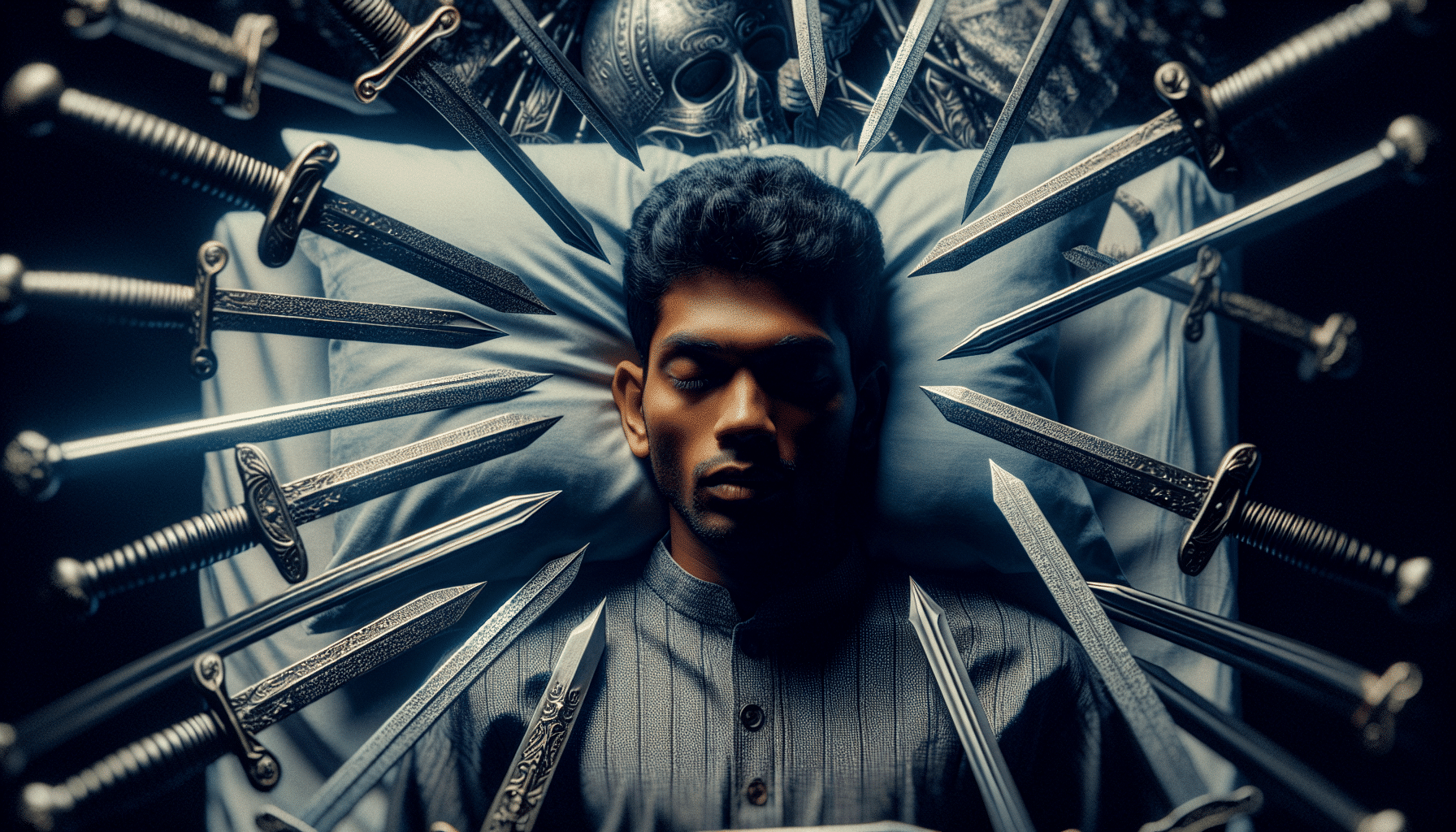
While you explore the Minor Arcana, you’ll notice that each card’s imagery isn’t arbitrary but laden with historical symbolism that reveals deeper insights. These visual elements offer a lens into the past, reflecting the beliefs and values of the time.
To enhance your understanding of these symbols, consider the following aspects of the Minor Arcana’s iconography:
-
Cardinal Directions: Each suit is traditionally associated with a cardinal direction, offering a connection to different energies and elements. For instance, Swords might be linked to the East and the power of the mind, while Pentacles could align with the North and material wellbeing.
-
Seasonal Representations: The suits also correspond to the seasons, which were integral to the life cycles in historical societies. Cups are often related to the emotional renewal of spring, while Wands may evoke the fiery growth of summer.
-
Daily Life and Hierarchies: The scenes depicted in the cards often mirror the societal structures and daily activities of the time. From the toil of the Ten of Pentacles to the celebration in the Three of Cups, these images reflect the worldviews and class distinctions of historical periods.
Cultural Influences on Symbols

Considering the myriad of symbols within the Tarot deck, you’ll find that cultural influences have shaped their meanings and interpretations through time. The Tarot’s imagery is rich with artistic motifs that draw from a vast pool of historical and cultural references. As you examine each card, you’re likely to notice a tapestry woven from the threads of different eras and societies, each adding a unique shade to the deck’s overall picture.
Religious interpretations, especially, have left a profound imprint on the Tarot. Many cards incorporate elements from mythology and spiritual practices that were prevalent when the Tarot first emerged in the 15th century. For instance, the iconography of the High Priestess or the Hierophant is deeply rooted in religious symbolism, reflecting the societal structures and spiritual beliefs of the time.
You’re engaging with a visual language that has evolved, embracing the changing artistic and religious landscapes. As you delve deeper into the Tarot, it’s crucial to recognize these cultural currents to fully appreciate the deck’s intricate symbolism and the wisdom it aims to impart.
The Tarot isn’t just a set of cards; it’s a mirror of humanity’s journey, encapsulating the diversity of our collective experience.
Conclusion
You’ve just journeyed through the enigmatic world of tarot, where every image holds a secret. From the Fool’s leap to the World’s embrace, each card whispers ancient tales.
The suits have spoken their elemental truths, and the court has revealed its hierarchy. Numbers have danced, and minor arcana’s symbols have unveiled their hidden lore.
Whether you’re a skeptic or a believer, the tarot’s historical symbolism offers a rich tapestry that weaves the past into the present.
Keep questioning, keep exploring – what will the cards reveal to you next?
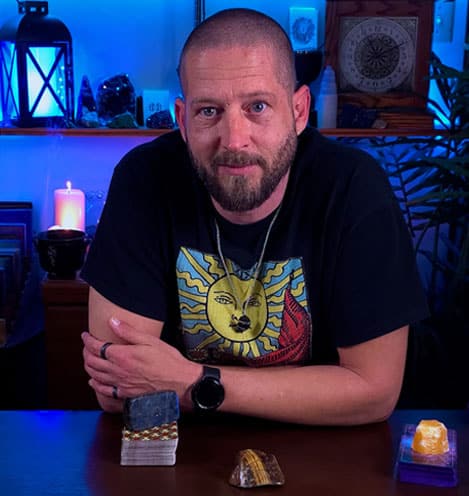
About The Author – Allen Hill
Allen Hill, the force behind Unknown Truth Tarot, has a YouTube following 6-times bigger than the population of his hometown, Miamisburg, Ohio. From his spiritually rich blog on Tarot and crystals to his role as CEO of The Unknown Truth Tarot Metaphysical Shop, Allen’s passion for the metaphysical shines through.
A master Tarot reader and “crystal junkie,” Allen is also a devoted dad to Dylan, 10, and Destiny, 24. When he’s not immersed in the world of Tarot and crystals, he enjoys poker and video gaming sessions, often humorously outplayed by Dylan.
Follow Allen on Twitter, Instagram, Facebook, TikTok, and subscribe to his Unknown Truth Tarot YouTube channel to join him on a journey of spiritual growth and self-discovery.



